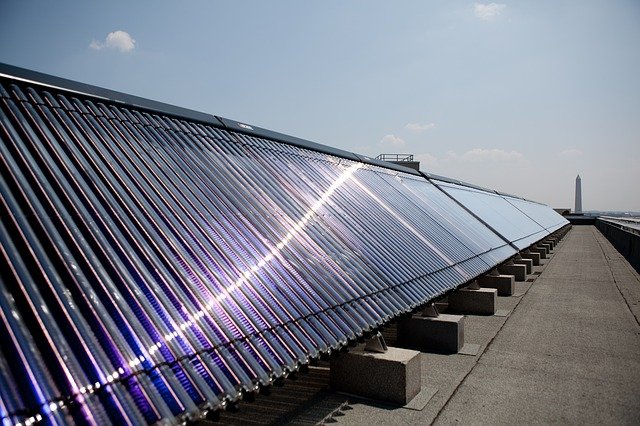Step-by-Step Guide: Maximizing Solar Power Installation Incentives
Are you ready to take advantage of the incredible solar power installation incentives? This step-by-step guide will show you how to maximize your savings and make a positive impact on the environment.
Discover the research, eligibility requirements, and paperwork needed to reap the benefits of solar power incentives. Don’t miss out on the opportunity to belong to a community of eco-conscious individuals who are making a difference.
Let’s get started!
Key Takeaways
- Research available solar power incentives, such as tax credits and net metering, to reduce installation costs and maximize return on investment.
- Understand eligibility requirements, including program guidelines and factors like installation type, system size, and location restrictions.
- Calculate potential savings and return on investment by evaluating current electricity bills, estimating energy generation, and considering long-term financial benefits.
- Complete necessary paperwork and documentation, ensuring all required documentation is organized and easily accessible.
Research Available Solar Power Incentives
To maximize the incentives for your solar power installation, begin by researching available solar power incentives.
Exploring tax credits and learning about net metering are two important aspects to consider. Tax credits can significantly reduce the cost of your solar power system. By taking advantage of these credits, you can save a substantial amount of money and make your investment more affordable.
Net metering, on the other hand, allows you to sell excess electricity generated by your solar panels back to the grid. This means that you can earn credits for the electricity you produce, which can offset your electricity bills during times when your solar panels aren’t generating enough power.
Understanding these incentives and how they can benefit you is crucial in maximizing the return on your solar power installation.
Understand Eligibility Requirements
How can you determine if you are eligible for solar power installation incentives? Understanding the eligibility requirements is crucial in maximizing the benefits of these incentives. Here are some important factors to consider:
- Incentive Program Limitations: Each incentive program may have specific limitations regarding the type of solar power installation, size, location, and other criteria. Make sure to review the program guidelines to ensure your project meets the requirements.
- Common Eligibility Misconceptions: There are some misconceptions about eligibility for solar power installation incentives. For example, some people believe that only homeowners can qualify, but in reality, many programs also offer incentives for businesses and non-profit organizations.
To help you better understand the eligibility requirements, here is a table summarizing some key factors to consider:
| Eligibility Factors | Description |
|---|---|
| Type of Installation | Determine if the program covers PV systems, solar water heaters, or both. |
| System Size | Check if there are any minimum or maximum capacity requirements. |
| Location Restrictions | Some programs may have specific geographic limitations. |
| Applicant Type | Find out if homeowners, businesses, or non-profit organizations are eligible. |
Calculate Potential Savings and Return on Investment
You can calculate your potential savings and return on investment for solar power installation by analyzing the financial aspects of the project. Here’s how:
- Potential savings analysis: Start by evaluating your current electricity bills and estimating how much energy your solar panels could generate. Use this information to calculate the potential savings on your monthly energy expenses.
- Long-term financial benefits: Consider the lifespan of the solar panels and the potential savings over the years. Calculate the total savings you could achieve over the lifetime of the system, taking into account factors like inflation and rising energy costs.
- Return on investment (ROI): Determine the payback period by dividing the total cost of the installation by the annual savings. This will give you an idea of how long it will take to recoup your initial investment.
- Consider additional incentives: Research any available tax credits, rebates, or net metering programs that can further enhance your financial benefits.
Complete Necessary Paperwork and Documentation
Start by gathering and organizing all the required paperwork and documentation for your solar power installation. Understanding deadlines and organizing paperwork is crucial to ensuring a smooth process and maximizing your incentives.
First, check with your local government or utility company to understand the specific deadlines for submitting your applications and paperwork. It’s important to meet these deadlines to avoid missing out on any incentives or rebates.
Next, gather all the necessary documents, such as proof of ownership, building permits, and interconnection agreements. Make sure to keep everything in a safe and easily accessible place.
Organize your paperwork in a logical order, labeling each document clearly. This will help streamline the process and make it easier for you to provide the required documentation when needed.
Take Advantage of Additional State and Local Rebates
To fully maximize your solar power installation incentives, regularly check for any additional state and local rebates that you could take advantage of. These extra incentives can help you save even more money and make your solar power system more affordable.
Here are four ways to take advantage of additional state and local rebates:
- Explore renewable energy grants: Many states offer grants specifically for renewable energy projects, including solar power installations. These grants can provide significant financial assistance and help offset the upfront costs of installing solar panels.
- Utilize solar tax credits: State and local governments often provide tax credits for installing solar panels. These credits can reduce your tax liability and put more money back in your pocket.
- Research local incentives: Some cities and municipalities offer their own incentives for installing solar power systems. These can include cash rebates, property tax exemptions, or low-interest loans.
- Contact your utility company: Some utility companies offer special programs or incentives for customers who install solar panels. These programs can provide additional financial benefits, such as net metering or feed-in tariffs.
Conclusion
So, now you have all the information and tools you need to maximize your solar power installation incentives. By following this step-by-step guide, you can navigate the process with ease and take advantage of the financial benefits available to you.
Remember, time is of the essence, so don’t wait too long to start reaping the rewards of your solar investment. Get ready to shine brightly and watch your savings soar like a shooting star!





